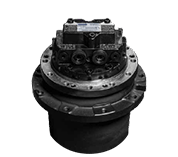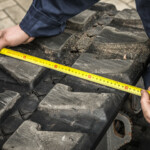Recognising wear on your undercarriage parts
If you are the owner of an excavator or similar machine, you are no doubt aware that the undercarriage is one of the most important parts of your machine. It forms the foundation of your excavator and allows it to operate safely and effectively.
With frequent use, your undercarriage parts will eventually wear out and need replacing. But how can you determine when it is time to renew these parts? In this blog, we dive deeper into the most common wear patterns of different undercarriage parts.
Recognising wear on your track links
Your undercarriage’s track link is due for replacement when the gap between the bushing and the pin becomes too large. This results in a longer track link that needs to be replaced. You can recognise pitch enlargement by the following visible signs:
- The height of the link decreases.
- The diameter of the bushings decreases.
- The track link no longer runs synchronously with the sprocket because the points of the segments or sprockets have become sharp.
- The Idler’s guidance comes out of the frame.
Recognising wear on your rubber tracks
The wear patterns of rubber tracks that are most common are:
- Tearing the rubber tracks: This can occur when you drive your tracks over sharp objects, such as construction debris or gravel. If the crack reaches the iron, moisture can reach the iron, causing it to rust. Eventually, this can cause the rubber tracks to break.
- Drying out of the rubber tracks due to UV light. This is detrimental to the quality of the track, hence it is recommended to store them indoors.
- Thinning of the tread: The tread can become thinner because the tracks are exposed to sharp objects or because too much pressure is applied to the tracks.
Recognising wear on your track shoes
When the track shoes’ bolt heads are level with the combs, it is necessary to replace the track shoes. As the combs get lower, the track shoes lose their strength, which can cause them to bend or break faster.
Want to learn more about track shoes wear? Then check out our page about track shoes.
Recognising wear on your top and bottom rollers
The top and bottom rollers of your excavator’s undercarriage can wear in two ways:
- The running surface of the rollers wears down, or in other words, the diameter becomes smaller. This happens when the excavator travels a lot on flat ground.
- The flanges of the rollers become thinner. This occurs when the excavator drives a lot at an angle, for example on a hill.
Recognising wear on your sprockets and segments
In general, when sprockets and segments wear, if the teeth of the sprocket or segment group are pointed, they should be replaced.
For more information on this type of wear, see our page on sprockets and segments.
Recognising wear on your idlers
The wear of your idler can usually be determined by the ratio of tread to rim. If this ratio becomes too large, it’s time to replace your undercarriage. Do not hesitate to contact your dealer if you are in doubt about the wear of your idler.
Also visit our page on idlers for more information.
Recognising wear on your tension devices

The most common sign of wear on tension devices is when the grease tensioner is leaking, meaning the track link can no longer be tensioned. This can be due to leaks in the seals.
You can find more types of wear on our page on tension devices.
Recognising wear on your track guards

If wear can be seen on the inside of the track guard, it means that there has been contact between the track guard and the track link. Moreover, it is crucial that the underside of the track guard remains straight.
The track guard’s job is to prevent the track link from running off the machine. If this wear becomes too great, the track guard may no longer work properly. This can result in additional wear on the track link and rollers.
Recognising wear on your rubber pads
It is quite easy to tell when wear is occurring on your rubber pads. Abrasion or surface friction causes the pads to become increasingly thin. When the rubber has worn down too much, it is time for a replacement.
Not sure if your rubber pads need replacing? Then don’t hesitate to contact your dealer, or read more about wear on the rubber pads page.
Do your undercarriage parts need replacing?
In doubt about the wear of your undercarriage parts? We are ready to help you with your question. Contact your nearest dealer for more information.
PRODUCTS THAT GET THE JOB DONE
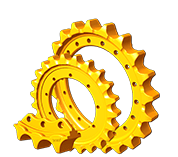
Sprockets &
Segments
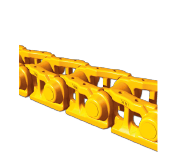
Track links
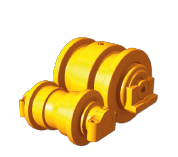
Bottom &
Top rollers
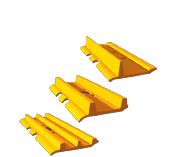
Track shoes
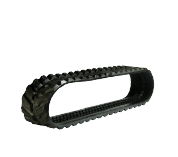
Rubber tracks
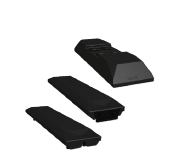
Rubber pads
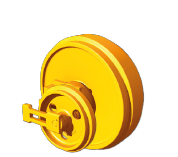
Idlers
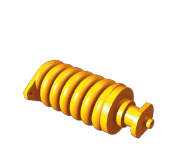
Tension devices
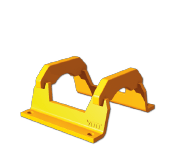
Track guards
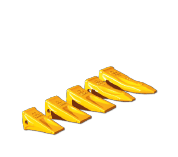
Bucket teeth &
Wear parts
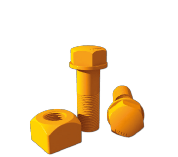
Bolts & Nuts
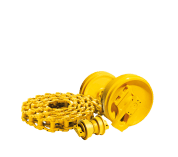
Complete undercarriages
